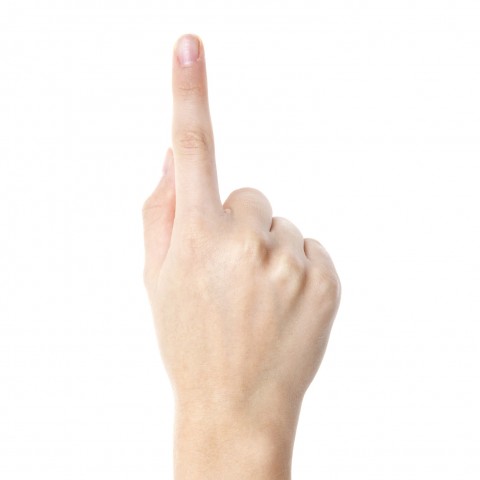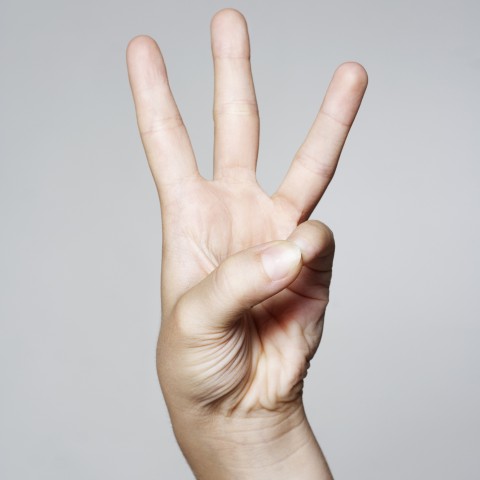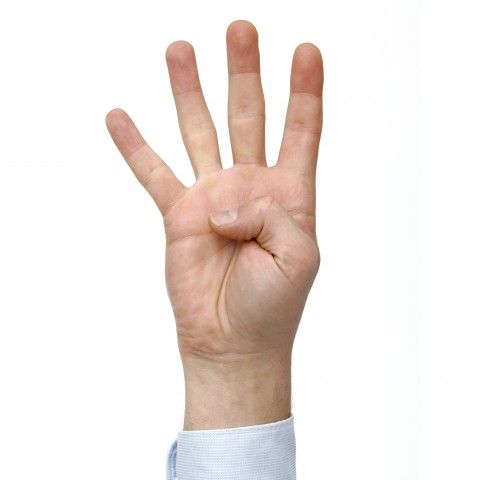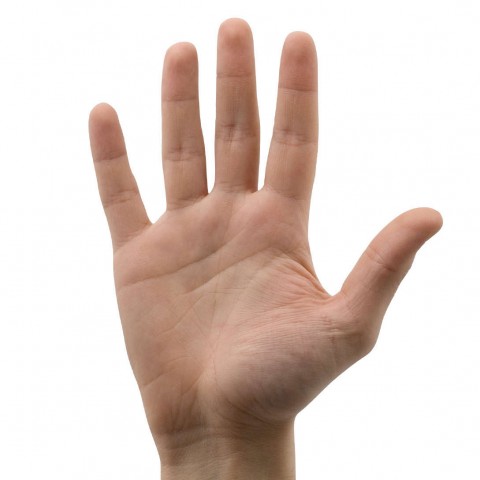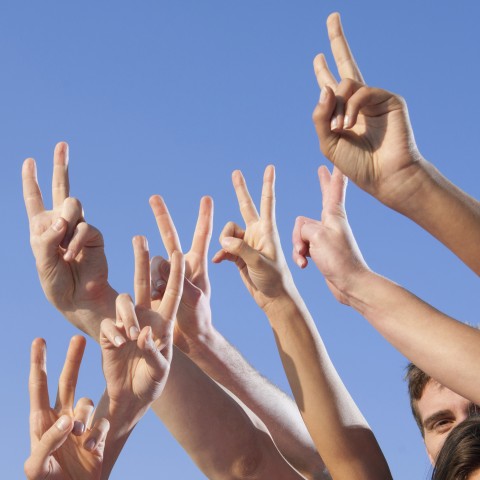
When you’re engaged in a conversation, body gestures play a great role in conveying your message. A lot can be integrated into your body language. With well-performed body gestures along with verbal language, individuals’ communication can be way more efficient and delightful.
Due to the differences between cultures, the rules for body gestures can vary. China, with a rich and strong history, refers to this as 礼仪之邦 (lǐ yí zhī bāng), meaning a state of ceremonies. As the very crutch of Chinese language, Chinese gestures and body language in Chinese culture hold much importance. If you want to communicate and express yourself more vividly and properly, here’s a guide to open your eyes to Chinese culture and its body gestures! Start with a bonus, and download your FREE cheat sheet – How to Improve Your Chinese Skills! (Logged-In Member Only)
- Body Gestures for Greeting
- How to Express Numbers
- Special Body Gestures
- Popular Informal Body Gestures for Fun
- Conclusion
1. Body Gestures for Greeting
In China, body language and gestures are commonly used to express friendly greetings in both formal and casual environments. Here’s a quick guide, though these are mostly self-explanatory and common in other cultures and regions.
1- Nod
Nodding is one of the easiest ways to greet someone. It’s often used with people you’re not very familiar with, in formal business occasions, or when you don’t have time to talk. You can just simply nod with a smile to the person you wish to greet.
2- Shake Hands
Shaking hands is a vital body gesture for showing courtesy and friendliness in Chinese culture. It shows a good measure of politeness and respect. You can use this gesture either in a formal business occasion or at a casual party to make some new friends.
3- Wave Hands
Similar to Western culture, waving hands when saying goodbye or hello is very common in China as well. It’s more likely to be used between close friends or people your age.
2. How to Express Numbers
Similar to in other cultures, Chinese body signs and hand movements are often used to express numbers. Learn more about this aspect of Chinese body language and gestures here.
1- One through Five
- In Chinese: 一
Pinyin: yī
In English: One - In Chinese: 二
Pinyin: èr
In English: Two - In Chinese: 三
Pinyin: sān
In English: Three
There are two ways of doing three depending on personal habits. One way looks like an OK gesture where thumb and index finger form a ring, and the other three fingers point up straight. There other is to simply stick out three fingers.
As you can see, in Chinese number gestures from one to five, the hand gestures are nearly identical to those in western countries. The number of your fingers that you stretch out literally represents the number you’re suggesting. These hand gestures aren’t difficult to master, right? Now, are you ready for more of a number challenge?
2- Six through Ten
- In Chinese: 六
Pinyin: liù
In English: Six
For numbers from six to nine, the explanations for the gestures are controversial. Some say that the gestures mimic the writing. Six and eight mimic their Chinese characters, 六 and 八 respectively. If you do the gesture and then keep it upside down, can you see that the shape looks just like the character? And gestures for seven and nine mimic the shape of 7 and 9.
- In Chinese: 七
Pinyin: qī
In English: Seven
For numbers six and seven, the reason why the finger is presented like this is very easy to understand: The thumb represents the number “five.” Now you can see how the fingers are added to become the number represented.
- In Chinese: 八
Pinyin: bā
In English: Eight
The meaning for this gesture is a little controversial. An easy and commonly accepted way to explain this is that 八 looks like how the fingers are positioned. However, it can mean different numbers in different regions. For example, in Taiwan, it means seven.
- In Chinese: 九
Pinyin: jiǔ
In English: Nine
Ten minus one equals nine, and that’s what the curved index finger represents, meaning one less than ten.
- In Chinese: 十
Pinyin: shí
In English: Ten
There are various ways of doing ten. One common way is to use index fingers from both hands to form a cross. This is a way to mimic its Chinese character 十, which looks like a cross. Another way is to hold a fist, which looks like a rock, and it means 石(shí) in Chinese. This pronunciation is the same as 十 (shí), so when a Chinese person sees a fist, it’s not hard to imagine the number ten. Feel free to choose whatever that makes you feel comfortable.
These Chinese hand gestures are probably quite different from what you know (sometimes they can even be different between various regions in China!). It might take some time for you to memorize it all, but don’t worry! Just try to understand how they’re represented, as this will help you absorb the gestures more quickly!
3. Special Body Gestures
Chinese gesturing also includes a few special body gestures that you should know before your trip to China! Here are a few of them.
1- How to Point to Yourself
In Chinese culture, when you’re relating something to yourself, you may point to your own nose with your index finger. The meaning of this is completely different from its meaning in Western culture, where it may be considered rude to do so. However, remember to avoid pointing your finger to other people’s nose. It’s perfectly fine for yourself, but when referring to others, you may want to use your whole palm instead to show full respect.
2- Hug People Carefully
When it comes to hugging, Chinese people might be a bit reserved. In Western culture, it’s perfectly normal to hug someone when greeting, even someone you barely know. As for Chinese greetings, Chinese people cannot accept such closeness. If it’s not someone you’re extremely close with or it’s not a very special occasion on which to show affection, remember to avoid hugging! This Chinese gesture may be considered rude. You may just want to offer a handshake instead.
3- “Come Here” Gesture
When you want to summon someone to come to you, as commonly known in Western culture, you usually make this sign with your palm facing up. This is slightly different in China. Chinese people are accustomed to making their palm face down while summoning people.
Anyhow, this is usually for people who are younger than you, kids, your employees, taxis, or waiters. For peers or your elders, this may be considered inappropriate and perceived as a lack of respect. You may instead want to politely invite them over with your arm suggesting the direction, or with a proper bow.
4. Popular Informal Body Gestures for Fun
Chinese nonverbal communication can go way beyond simple greetings and formalities—they can even be fun! Here are a few Chinese gestures and signs that have gained popularity in Chinese culture for being convenient and even cute! You’ll fit right in with your Chinese surroundings once you get the hang of these.
1- Make a Little Heart
Using your thumb and index finger to form a little heart has recently become an incredibly popular gesture in Asia because of how adorable it looks. Many celebrities are starting to do it as well to show their love for their fans. If you have a close Chinese friend (or are someday able to meet the celebrity of your dreams!) and you want to show how much you appreciate him/her, this is undoubtedly a pleasant way to do so!
2- Make “Okay” with Your Fingers
Similar to in Western culture, you can certainly indicate “OK” with your fingers since the English phrase “Okay” (along with many other simple English phrases) have been integrated internationally and are now a part of Chinese people’s daily lives.
3- Fist and Palm Gesture
This is a Chinese tradition meaning “wish you good fortune.” It may feel strange at first, but as you practice more and get used to it, it will become very fun and natural to do! Chinese people usually do it during New Years, especially young people; they do it to elders to show their respect and good wishes. If you show this gesture to elders during a Chinese New Year celebration, you might want to add 给您拜年了! (gěi nín bài nián le), which is a way to say “wish you a happy new year” in Chinese.
4- Typical Peace Sign for Taking Pictures
If there’s one pose that everyone uses at least once in their life for a picture, it’s the “peace” sign. However, Chinese people use it quite differently than some Western people. In Chinese culture, they like to show the side of their palm to the camera while taking a picture. Further, girls like to put the “peace” sign close to their face or even directly point it to their face.
5- Pinky Promise
In many cultures, a pinky promise means an agreement. Many friends and couples like to make promises to each other in this way, and many Chinese people think it’s a lovely way to make a promise. One thing to remember is that this is not seen as a formal agreement in Chinese culture, so be sure not to use it for an official contract or anything like that.
5. Conclusion
Did you have fun learning common body gestures in China? Is your desire for learning more interesting Chinese culture aroused? If you wish to learn more about Chinese people and their culture beyond what we already introduced above, just come to ChineseClass101.com to embrace all kinds of sources regarding learning the Chinese language and its culture!
In the meantime, why not practice these body gestures to learn Chinese more effectively (and with a lot more flair)? Best wishes for your Chinese learning endeavors! Start with a bonus, and download your FREE cheat sheet – How to Improve Your Chinese Skills! (Logged-In Member Only)






